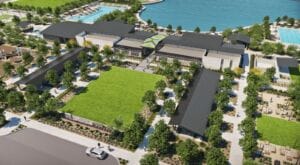In the realm of multifamily housing, the exterior plays a pivotal role in shaping its residents’ experience and overall appeal. From curb appeal to functionality and sustainability, several key considerations come into play when designing or renovating the exterior of multifamily properties. Let’s delve into these considerations and explore how they contribute to creating vibrant and welcoming living spaces.
Curb Appeal: Making a Lasting First Impression
Curb appeal sets the tone for any multifamily property. It’s the first impression that potential residents receive and can greatly influence their decision-making process. Investing in well-maintained landscaping, attractive facades, and inviting entryways can significantly enhance the overall aesthetic appeal.
Incorporating elements like green spaces, decorative lighting, and unique architectural features can further elevate the property’s charm and curb appeal. Incorporating multifamily renovation projects into the exterior considerations can rejuvenate properties, enhancing their appeal and functionality for current and prospective residents alike.
Durability and Maintenance: Ensuring Long-Term Sustainability
Multifamily exteriors are subjected to constant wear and tear due to weather conditions and resident usage. Opting for durable materials and finishes is essential to withstand these challenges and minimize maintenance requirements. Materials such as brick, concrete, and fiber cement siding offer longevity and require minimal upkeep, making them ideal choices for multifamily developments.
Additionally, implementing regular inspection and maintenance schedules can help to identify issues early on and prevent costly repairs later down the line.
Safety and Security: Prioritizing Resident Well-Being
Safety and security are paramount concerns for multifamily residents. Implementing adequate lighting, surveillance systems, and secure entryways can help to create a sense of safety and deter unwanted incidents.
Additionally, incorporating features like well-lit walkways, visible emergency exits, and sturdy handrails enhances accessibility and ensures that residents feel secure within the property premises.
Community Spaces: Fostering Social Interaction
Multifamily living extends beyond individual units; it’s about fostering a sense of community among residents. Designing exterior spaces that encourage social interaction and recreational activities can greatly enhance residents’ quality of life.
This could include amenities such as communal gardens, outdoor seating areas, barbecue pits, and playgrounds. By creating opportunities for residents to connect and engage with each other, multifamily properties can cultivate a vibrant and cohesive community environment.
Environmental Sustainability: Embracing Eco-Friendly Practices
With increasing awareness of environmental issues, multifamily properties are increasingly adopting sustainable practices in their exterior design. Incorporating features such as energy-efficient lighting, green roofs, rainwater harvesting systems, and native landscaping not only reduces the property’s environmental footprint but also lowers operational costs in the long run. Moreover, promoting sustainable transportation options such as bike racks and electric vehicle charging stations encourages residents to adopt eco-friendly lifestyles.
Regulatory Compliance: Navigating Legal and Zoning Requirements
Compliance with local regulations and zoning requirements is crucial when planning multifamily exterior projects. From building codes to environmental regulations, navigating the legal landscape will ensure that the property meets all necessary standards and avoids potential penalties or delays.
Working with experienced architects and contractors who are well-versed in local regulations can streamline the approval process and ensure smooth execution of the project.
Conclusion
In conclusion, the exterior design of multifamily properties plays a vital role in shaping the overall living experience for residents. By prioritizing elements such as curb appeal, durability, safety, community spaces, sustainability, and regulatory compliance, property developers and managers can create inviting and sustainable environments that enhance the quality of life for residents and contribute to the long-term success of the property.




